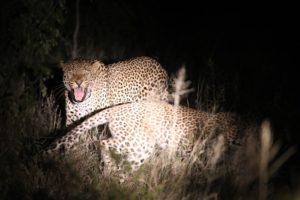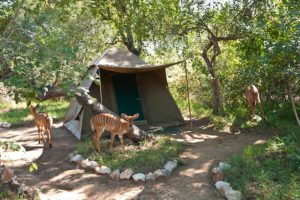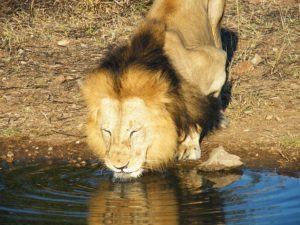Selati: From Cattle Farm to Game Reserve
October 12, 2018 - 3 minutes read The reintroduction of predators helped create a balanced, natural ecosystem at a game reserve in South Africa that now hosts an Eco-Training base camp.
The reintroduction of predators helped create a balanced, natural ecosystem at a game reserve in South Africa that now hosts an Eco-Training base camp.
Selati Game Reserve in South Africa was established in the late 1980s when seven neighboring cattle farmers dropped their fences,  removed their cattle and turned their attention to wild game. Collectively they had 52 acres of land for this purpose and there was already a promising amount of game around the area including three rare antelope species — sable, nyala and tsessebe . There weren’t many predators around, mainly because most large cats and hyena had been killed to protect the cattle.
removed their cattle and turned their attention to wild game. Collectively they had 52 acres of land for this purpose and there was already a promising amount of game around the area including three rare antelope species — sable, nyala and tsessebe . There weren’t many predators around, mainly because most large cats and hyena had been killed to protect the cattle.
As time passed and Selati grew in size, so did the numbers of herbivores to the point where it became obvious there needed to be a balance in the natural ecosystem. If more predators were reintroduced into the environment, it would help to complete the food chain and ultimately result in healthier conditions for all of the reserve’s wildlife.
 Lions were reintroduced into the reserve in 2002. Although leopards have always been there, but they are now protected and their numbers remain stable. According to a leopard research program conducted a few years ago, there are 23 leopards within the reserve.
Lions were reintroduced into the reserve in 2002. Although leopards have always been there, but they are now protected and their numbers remain stable. According to a leopard research program conducted a few years ago, there are 23 leopards within the reserve.
Historically, Selati was not an ideal habitat for cheetahs, as they prefer open grassy areas that allow them to stalk their prey. But during the decades of cattle grazing, the landscape began to change and the area became ideal for cheetahs. In 2015, with help from the Endangered Wildlife Trust, cheetahs were reintroduced to Selati.
Initially, the program worked and the cheetah survived and stayed within the reserve. Unfortunately, as the lion population grew, so did the conflict between these animals and all but one male cheetah was killed over time.
Selati management has monitored the lion population closely and decided to relocate some of the big games elsewhere. The remaining lion population declined via natural means like the predation of lion cubs by other animals and old age.
Earlier this year, it was decided the time is right to introduce a female cheetah for the lone male cheetah who remained in the reserve. She arrived in April and within 24 hours had found the male. They have been seen together on several occasions, and hopefully soon they will have young cubs running around.
Typically, when animals are introduced into a new area, there is a settlement period that allows the animals to familiarize themselves with their new surroundings. And because the male was a total stranger, the female cheetah will most likely not conceive the first time they mate, a natural phenomenon called a “pseudo” oestrous cycle. When she is more comfortable with the male, she’ll mate again and hopefully conceive.
Tags: African Safaris, Balanced eco systems, Eco Training, Selati Game Reserve
0 Comments